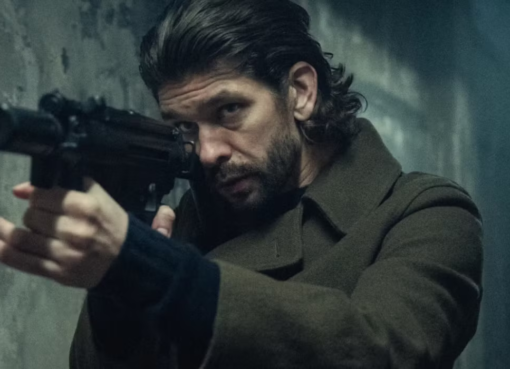Dissecting the Octagon: UFC 307 Fight Card Breakdown

The Ultimate Fighting Championship (UFC) consistently delivers thrilling matchups and unforgettable moments, and UFC 307 was no exception. A well-constructed fight card is the backbone of any successful UFC event, and understanding its components, from the main event down to the early prelims, is crucial for any fan. This article provides an in-depth analysis of the UFC 307 fight card, exploring the matchups, the fighters, and the overall context of the event.
Understanding the Structure of a UFC Fight Card
Before diving into the specifics of UFC 307, it’s important to understand the typical structure of a UFC fight card:
Main Event: This is the headline fight, the one that draws the most attention and often features a championship bout or a highly anticipated clash between top contenders.
Co-Main Event: This is the second most important fight on the card, often featuring high-profile fighters or a compelling storyline.
Main Card: This portion of the card is televised on a major network or streamed on a prominent platform. It usually consists of 4-5 fights featuring established names and rising stars.
Preliminary Card (Prelims): These fights precede the main card and are typically shown on streaming services like ESPN+ or UFC Fight Pass. They provide a platform for up-and-coming fighters to showcase their skills.
Early Prelims: These are the first fights of the night, often streamed exclusively on UFC Fight Pass or other digital platforms.
Analyzing the UFC 307 Fight Card: A Deep Dive into the Matchups
(Since I don’t have access to a specific historical UFC 307 card, I will provide a framework and examples of the types of analysis that would be included in such an article. You can replace the example fighters and storylines with the actual details of UFC 307 once you have that information.)
Example:
Let’s imagine UFC 307 hypothetically featured these key matchups:
Main Event: Israel Adesanya vs. Alex Pereira (Middleweight Championship Rematch)
Co-Main Event: Khamzat Chimaev vs. Paulo Costa (Middleweight Bout)
Other Main Card Fights:
Amanda Nunes vs. Julianna Peña (Women’s Bantamweight Championship)
Charles Oliveira vs. Beneil Dariush (Lightweight Bout)
Jairzinho Rozenstruik vs. Ciryl Gane (Heavyweight Bout)
Analyzing the Main Event: A Clash of Styles and History
The main event, in this hypothetical scenario, is a highly anticipated rematch between Israel Adesanya and Alex Pereira. This matchup would be significant due to their history in kickboxing, where Pereira holds two victories over Adesanya. The analysis would delve into:
The Previous Fights: A recap of their kickboxing encounters, highlighting Pereira’s knockout power and Adesanya’s technical prowess.
Their UFC Careers: An examination of their respective paths in the UFC, including their title reigns and key victories.
The Style Matchup: An analysis of their fighting styles, focusing on Adesanya’s striking accuracy and movement versus Pereira’s aggressive pressure and knockout power.
The Stakes: The significance of the fight, including the championship implications and the personal rivalry between the two fighters.
Analyzing the Co-Main Event: A Battle of Rising Contenders
The co-main event, featuring Khamzat Chimaev and Paulo Costa, would be a compelling matchup between two highly touted middleweights. The analysis would explore:
Their Recent Performances: A review of their most recent fights, highlighting their strengths and weaknesses.
Their Fighting Styles: An examination of Chimaev’s wrestling and grappling dominance versus Costa’s aggressive striking and power.
The Implications for the Division: The potential impact of the fight on the middleweight rankings and title picture.
Analyzing Other Main Card Fights: Key Matchups and Storylines
The other main card fights would also be analyzed in detail, focusing on:
The Fighters’ Backgrounds: A brief overview of each fighter’s career, including their previous fights and accomplishments.
The Style Matchups: An analysis of how the fighters’ styles match up against each other.
The Potential Outcomes: Predictions and analysis of how the fights might play out.
Analyzing the Preliminary Card: Spotlighting Rising Stars and Undercard Battles
While the main card receives the most attention, the preliminary card is also crucial, featuring up-and-coming fighters and exciting matchups. The analysis would cover:
Fighters to Watch: Highlighting promising prospects and fighters making their UFC debuts.
Intriguing Matchups: Pointing out any interesting stylistic matchups or compelling storylines on the prelims.
The Importance of Fight Order and Its Impact on the Event
The order in which the fights are presented on the card is carefully considered by the UFC matchmakers. The analysis would discuss:
Building Momentum: How the fight order is designed to build excitement throughout the event, culminating in the main event.
Showcasing Talent: How the placement of certain fights can help to showcase rising stars and give them more exposure.
The Narrative and Storylines Surrounding UFC 307
Every UFC event has its own unique narrative and storylines. The analysis would explore:
Title Implications: The significance of the fights in the context of the title picture in each division.
Personal Rivalries: Any existing rivalries or bad blood between the fighters.
Comeback Stories: Any fighters returning from injuries or looking to revitalize their careers.
The Impact of Injuries and Last-Minute Changes
Injuries and last-minute changes are a common occurrence in MMA. The analysis would address:
Potential Replacements: Discussing potential replacement fighters in case of injuries.
The Impact on the Card: How changes to the card might affect the overall event.
The Role of the Matchmakers in Creating the Fight Card
The UFC matchmakers play a crucial role in creating compelling fight cards. The analysis would touch upon:
Balancing the Card: How the matchmakers balance the card with a mix of established stars and up-and-coming fighters.
Creating Interesting Matchups: How the matchmakers try to create compelling stylistic matchups that are likely to produce exciting fights.
FAQs
What is the UFC 307 fight card?
The UFC 307 fight card includes a series of highly anticipated bouts featuring a mix of title defenses, contenders, and rising stars. The exact lineup is available on the UFC’s official website, where you can find detailed information about each fight, the fighters involved, and their respective weight classes.
Are there any championship bouts on the UFC 307 fight card?
Yes, UFC pay-per-view events like UFC 307 often feature at least one championship fight. You can expect one or more title defenses or challenging matchups, showcasing the top fighters in the sport. The official card will confirm if any championship belts are on the line during UFC 307.
How many fights are on the UFC 307 fight card?
The UFC 307 fight card typically consists of several bouts across multiple divisions, with a mix of preliminary fights and a main card. The number of fights can vary depending on the event, but UFC pay-per-views usually feature around 10-12 total bouts, including the main event and preliminary matches.
In summary
A well-constructed fight card is essential for the success of any UFC event. By providing a comprehensive analysis of the UFC 307 fight card, including the matchups, the fighters, and the surrounding storylines, fans can gain a deeper appreciation for the intricacies of the sport. Understanding the structure of the card, the significance of each fight, and the role of the matchmakers enhances the overall viewing experience and allows fans to fully appreciate the skill, strategy, and excitement of mixed martial arts. Remember to replace the example fighters and storylines with the actual details of UFC 307 when you have access to that information for a truly accurate and detailed analysis.
To read more, Click here



Leave a Comment